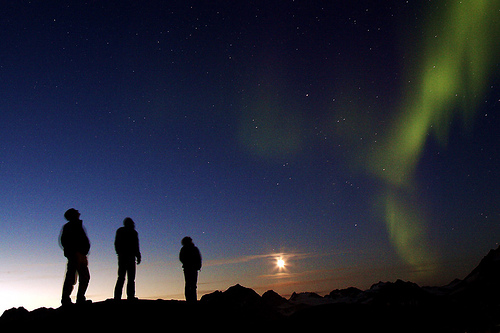No matter what your position on global warming or environmental change, you’d have to agree that the media is full of stories about famous sightseeing spots that are already changing significantly, probably due to the environmental stresses that we, as humans and as travelers, have placed on our world. In the last few years the phenomenon of doomsday tourism has come alive: planning your trips to take in these important places before they melt, crumble, fade or drift away, never to be seen or experienced in quite the same way again.
Vagabondish is reader-supported. When you buy through links on our site, we may earn a small affiliate commission. Read our disclosure.
Some sights are simply going to melt, the scientists say, as an obvious result of global warming. Others will end up underwater after the ice melts and the water levels rise. Others are degrading thanks to pollution or chemicals in the water. And some simply can’t handle the numbers of tourists now traipsing over them after centuries and centuries of virtually complete isolation. Yep, the end is coming, and we’re probably the cause of it. Yet we don’t really want to admit our mistakes: we just want to make sure we get to see all these amazing sights of the world before they’re not there to see any more.
Destinations of the Doomsday Tourists
The Galápagos Islands off Ecuador have experienced a huge surge in tourist numbers in recent years. A 250% increase in tourists between 1990 and 2006 is just one of the indicators of their popularity, and it seems like the reason lies largely in the marketing. “Eco-tourists” are now being targeted to experience the Galápagos Islands, and while they might sound green and nature-loving, sheer numbers make it a fairly environmentally unfriendly boost. Critics point to large boats sitting in port, acting as floating hotels (so they don’t even inject much money into the local economy), and activities like kayaking and fishing damage the already fragile natural ecosystem.

Watching the Northern Lights, Greenland © nick_russill
The island of Greenland has also had a boom thanks to doomsday tourism. There are all kinds of exciting doomsday-type sights to see there: from the Ilulissat ice fjord, which is apparently melting already, to the massive ice wall of Kangerlussuaq, which experts say would add 24 feet to the world’s sea level if (or when) it melts.
Travelers to Antarctica have doubled in the past five years, and interest in the Arctic is just as strong. These frozen ends of the earth are the obvious candidates for destruction from global warming, and tourists know it. Despite many companies expanding their routes and introducing new tours and cruises in the direction of both poles, there is still more demand from customers that just can’t be satisfied.
In Australia, it’s not just the idea of melting icebergs and rising sea levels that are causing panic. One of its most significant tourist attractions, the Great Barrier Reef, is under threat due to rising temperatures. Just a small rise in average temperatures causes chaos to the sensitive coral, unleashing an unbecoming bleaching effect, and some experts think the reef could be completely devastated by 2025. Coral reefs around the world are all prone to a similar fate, and even the reefs of the Caribbean are at risk.

Anemone Fish, North Sulawesi © JennyHuang
The list goes on. The islands of the Maldives and Tuvalu, low lying as they are, might disappear completely if sea levels rise. The snow caps on the peak of Mount Kilimanjaro might have vanished permanently within 15 years. Heck, even the sugar maple trees of New England are said to be under threat. We’re going to have to get real busy to see all these things while they’re still at their prime, or at least not completely destroyed yet.
Can Doomsday Tourism Be Responsible Tourism?
There’s a new phrase every minute. Eco-tourism, green tourism, responsible tourism, you name it, there’s always a positive spin to keep prospective tourists happy. There are definitely destinations and, at a more micro level, resorts, towns and tour operators who are genuinely trying to help the environment, both through green practices and through educating tourists. So when does eco-tourism become doomsday tourism?
The official word is that travel agents don’t market doomsday tourism. But all that means is they haven’t yet gone as far as putting “Don’t Miss Out!” in big letters across a brochure for a Galápagos Islands tour or a cruise to Antarctica. Off the record, plenty of agents are nudging their clients in this direction. It helps that a lot of these destinations are fairly high-end, expensive trips, so there’s an obvious benefit to the travel agents, but we can’t just blame them — it’s also part of the natural human selfishness to want to see something that others in the future might not be able to. And with the media starting to bombard us with lists of places to visit before they disappear, who can blame anyone for jumping on the doomsday bandwagon?
Doomsday tourism is a bit of a dilemma. The global environment is changing, and some amazing places might not exist as they do now in ten, twenty or fifty years. That might happen whether anybody goes to see them or not. Or perhaps the awareness raised in those people who do visit will be enough to help get the money and motivation behind organizations who can actually stop or slow the environmental degradation these sites are experiencing. I guess it’s just a personal decision for each of us to make when we’re considering our future travel plans.


